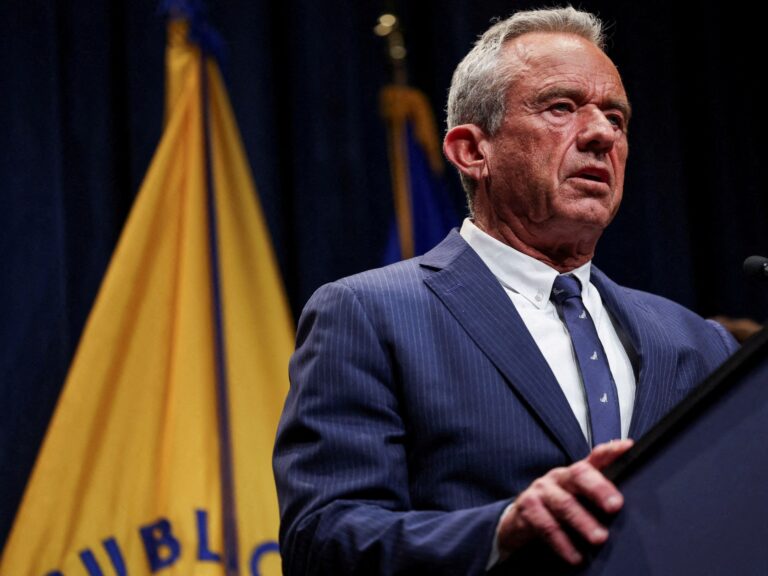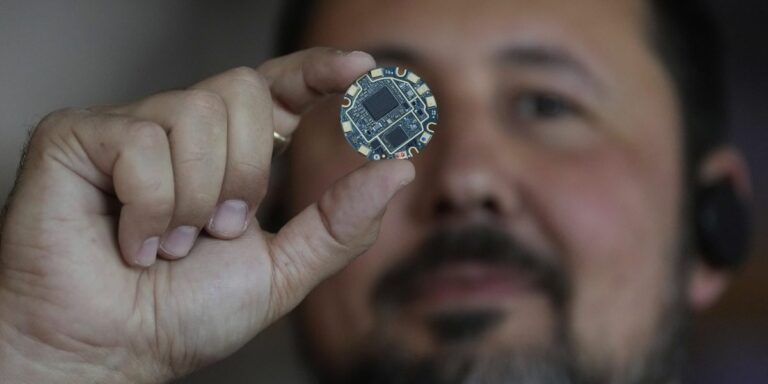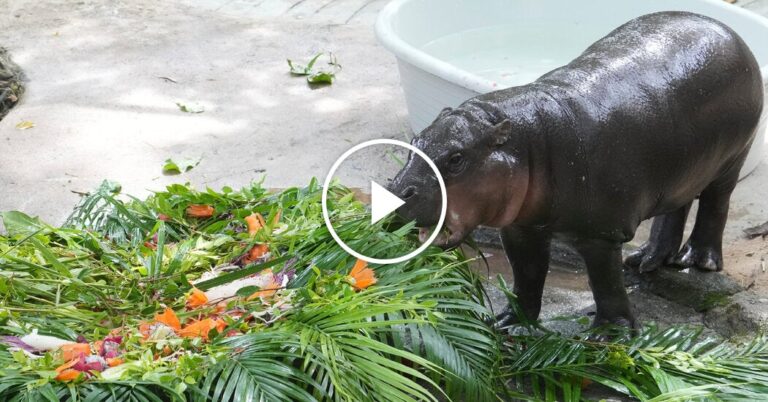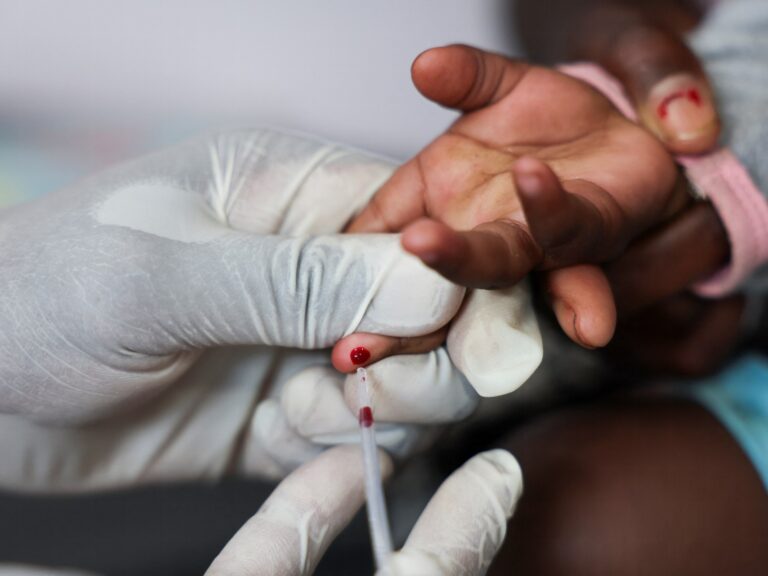Zelenskiy discusses war supplies, Russia sanctions with US lawmakers
Discovering Antarctica from Home: A Virtual Reality Journey
Legend has it that Ernest Shackleton, in preparation for his groundbreaking Antarctic expedition, placed an advertisement that read: “Men wanted for hazardous journey. Low wages, bitter cold, long hours of complete darkness. Safe return doubtful. Honour and recognition in event of success.”
While the authenticity of this story may be debated, the extreme conditions of Antarctica remain unchanged. Today, however, one can explore this frozen frontier safely and without causing environmental harm to the continent, thanks to a virtual reality (VR) experience developed by the British foundation UKAHT.
The Stonington Island immersive experience
Stonington Island, nestled in Margarita Bay, stands out among the several permanent settlements in Antarctica, most of which were established in the 20th century. It was here in 1946 that the British set up their inaugural base, known as Base E. Notably, this base also became the backdrop for a historic milestone in 1947 when Edith Ronne and Jennie Darlington became the first women to spend a winter in Antarctica.
The UKAHT Foundation, committed to preserving Antarctica and supported by trustees including a descendant of Shackleton, now invites users to discover the island and its historical base through an immersive experience dubbed “Immersive Antarctica.” This journey not only virtually transports travelers to the island but to a specific time: 1965.
Utilizing period photographs, laser scans, and an AI program to animate the virtual environment, users, equipped with VR goggles, can explore the original state of the base, engage in a dog sled tour of the island, and experience visiting the settlement as if they were there in person. This form of virtual tourism is enhanced by the narrative of two scientists who worked on the island in the 1960s.
Initially, this immersive Antarctic experience will be available exclusively at the Cambridge Polar Museum in the United Kingdom. However, the foundation intends to make the materials accessible to the general public in 2024.
Other immersive experiences in Antarctica
Although the virtual reality tourism project by UKAHT is one of the most intricately designed to date, several other initiatives offer immersive explorations of Antarctica’s wildlife and its starkly beautiful landscapes:
- Antarctica 360 VR: An immersive experience by the Antarctica Heritage Trust that offers a virtual expedition through the Antarctic Peninsula in 2019, including kayaking through icy waters and interactions with penguins.
- Thin Ice VR at the International Antarctic Center: A VR documentary that traces Sir Ernest Shackleton’s expedition and Tim Jarvis’ recreation, focusing on climate change impacts in the region.
- Quark Expeditions 360° Virtual Experience in Antarctica: An exploration of the Antarctic landscape with VR videos simulating the experience of being on an expedition.
- The Antarctic Experience at the National Museum of Australia: Offers a VR journey depicting a day in the life of Antarctic scientists, including helicopter flights over glaciers and encounters with penguin colonies.
- National Geographic’s Antarctic Exploration in VR: The viewer can join National Geographic photographer Paul Nicklen on a VR tour of Antarctica, featuring 360-degree views of the landscape and wildlife encounters.
The scope of immersive experiences
These immersive experiences introduce a new dimension to art, education, marketing, tourism, and industrial settings, offering interactions that include virtual visits to remote locations or the integration of digital elements into our physical world. Key among immersive technologies are virtual reality (VR), which creates a fully digital environment for users to explore, and augmented reality (AR), which overlays digital information on the real world for an enriched experience.
In the realm of real-world expeditions, the Homeward Bound project stands out, sending dozens of women annually on a boat journey to the icy waters of Antarctica to promote female leadership, in collaboration with ACCIONA. For those interested in this unique expedition and potentially participating, an enlightening article was recently published detailing a participant’s firsthand account.
Sources:
Imágenes:
- Dall-E/I’mnovation-Hub
- Wikimedia Commons
New restrictions on public benefits for undocumented immigrants in the US expanded by Trump administration
Health Department says immigrants will lose access to 13 more federal programmes, including an educational project for low-income children.
United States officials are cutting down further on undocumented immigrants’ access to healthcare programmes and benefits as part of President Donald Trump’s widening immigration crackdown.
On Thursday, the US Department of Health and Human Services (HHS) announced that it was broadening its interpretation of a 1996 law that prohibits most immigrants from receiving federal public benefits.
The decision means that undocumented immigrants will no longer be eligible for an additional 13 programmes.
They include Head Start, a pre-school educational programme, and projects that address family planning, mental health, substance abuse and efforts to reduce homelessness.
“For too long, the government has diverted hardworking Americans’ tax dollars to incentivise illegal immigration,” HHS Secretary Robert F Kennedy Jr said on Thursday.
“Today’s action changes that – it restores integrity to federal social programmes, enforces the rule of law and protects vital resources for the American people.”
Critics fear the added restrictions will further marginalise a vulnerable group of immigrants who often have scarce resources, exacerbating public health crises in the US.
The new restrictions relate to the Personal Responsibility and Work Opportunity Reconciliation Act (PRWORA) of 1996.
That law — passed under Democratic President Bill Clinton — barred those living in the country without valid immigration documents and those on temporary visas, like students or foreign workers, from receiving major benefits from the federal government.
However, the scope of the restrictions was not spelled out, as the law did not define what counted as “federal public benefits”.
To make things clearer, the HHS issued a legal interpretation in 1998, which prevented access to 31 programmes. Medicaid — an insurance programme for low-income households — and Social Security were among them, as was the Children’s Health Insurance Program.
In a statement released on Thursday, the HHS claimed “the 1998 policy improperly narrowed the scope of PRWORA”, allowing undocumented immigrants to access programmes which “Congress intended only for the American people”.
With Thursday’s additions, the total number of restricted programmes rises to 44.
The HHS’s new policy, which is subject to a 30-day public comment period, will take effect when it is published in the Federal Register.
Since starting his second presidential term in January, Donald Trump has made it a priority to tackle undocumented immigration.
Critics have accused his administration of violating human rights and the US Constitution, as well as exceeding his presidential authority.
As part of Trump’s campaign of mass deportation, for example, the president invoked a controversial wartime legislation to deport hundreds of Venezuelan immigrants to a notorious prison in El Salvador in March. Opponents argue that Trump falsely declared undocumented immigration to be an “invasion” in order to justify denying the immigrants their right to due process.
Former Employer Sues Technie for Showing Sam Altman and Jony Ive AI Drawing
A secretive competition to pioneer a new way of communicating with artificial intelligence chatbots is getting a messy public airing as OpenAI fights a trademark dispute over its stealth hardware collaboration with legendary iPhone designer Jony Ive.
In the latest twist, tech startup iyO Inc., which already sued Ive and OpenAI CEO Sam Altman for trademark infringement, is now suing one of its own former employees for allegedly leaking a confidential drawing of iyO’s unreleased product.
At the heart of this bitter legal wrangling is a big idea: we shouldn’t need to stare at computer or phone screens or talk to a box like Amazon’s Alexa to interact with our future AI assistants in a natural way. And whoever comes up with this new AI interface could profit immensely from it.
OpenAI started to outline its own vision in May by buying io Products, a product and engineering company co-founded by Ive, in a deal valued at nearly $6.5 billion. Soon after, iyO sued for trademark infringement for the similar sounding name and because of the two firms’ past interactions.
U.S. District Judge Trina Thompson ruled last month that iyO has a strong enough case to proceed to a hearing this fall. Until then, she ordered Altman, Ive and OpenAI to refrain from using the io brand, forcing them to take down the web page and all mentions of the venture.
A second lawsuit from iyO filed this week in San Francisco Superior Court accuses a former iyO executive, Dan Sargent, of breach of contract and misappropriation of trade secrets over his meetings with another io co-founder, Tang Yew Tan, a close Ive ally who led design of the Apple Watch.
Sargent left iyO in December and now works for Apple. He and Apple didn’t immediately respond to a request for comment.
“This is not an action we take lightly,” said iyO CEO Jason Rugolo in a statement Thursday. “Our primary goal here is not to target a former employee, whom we considered a friend, but to hold accountable those whom we believe preyed on him from a position of power.”
Rugolo told The Associated Press last month that he thought he was on the right path in 2022 when he pitched his ideas and showed off his prototypes to firms tied to Altman and Ive. Rugolo later publicly expanded on his earbud-like “audio computer” product in a TED Talk last year.
What he didn’t know was that soon after, Ive and Altman would begin quietly collaborating on their own AI hardware initiative and give it a similar name.
“I’m happy to compete on product, but calling it the same name, that part is just amazing to me. And it was shocking,” Rugolo said in an interview.
The new venture was revealed publicly in a May video announcement, and to Rugolo about two months earlier after he had emailed Altman with an investment pitch.
“thanks but im working on something competitive so will (respectfully) pass!” Altman wrote to Rugolo in March, adding in parentheses that it was called io.
Altman has dismissed iyO’s lawsuit on social media as a “silly, disappointing and wrong” move from a “quite persistent” Rugolo. Other executives in court documents have characterized the product Rugolo was pitching them as a failed one that didn’t work properly in a demo.
Altman said in a written declaration that he and Ive chose the “io” name two years ago in reference to the concept of “input/output” that describes how a computer receives and transmits information. Neither io nor iyO was first to play with the phrasing — Google’s big annual technology showcase is called I/O — but Altman said he and Ive acquired the io.com domain name in August 2023.
The idea was “to create products that go beyond traditional products and interfaces,” Altman said. “We want to create new ways for people to input their requests and new ways for them to receive helpful outputs, powered by AI.”
A number of startups have already tried, and mostly failed, to build gadgetry for AI interactions. The startup Humane developed a wearable pin that you could talk to, but it was poorly reviewed and the startup discontinued sales after HP acquired its assets earlier this year.
Altman has suggested that io’s version could be different. He said in a now-removed video that he’s already trying a prototype at home that Ive gave him, calling it “the coolest piece of technology that the world will have ever seen.”
What Altman and Ive still haven’t said is what exactly it is. The court case, however, has forced their team to disclose what it’s not.
“Its design is not yet finalized, but it is not an in-ear device, nor a wearable device,” said Tan in a court declaration that sought to distance the venture from iyO’s product.
It was that same declaration that led iyO to sue Sargent this week. Tan revealed in the filing that he had talked to a “now former” iyO engineer who was looking for a job because of his frustration with “iyO’s slow pace, unscalable product plans, and continued acceptance of preorders without a sellable product.”
Those conversations with the unnamed employee led Tan to conclude “that iyO was basically offering ‘vaporware’ — advertising for a product that does not actually exist or function as advertised, and my instinct was to avoid meeting with iyO myself and to discourage others from doing so.”
IyO said its investigators recently reached out to Sargent and confirmed he was the one who met with Tan.
Rugolo told the AP he feels duped after he first pitched his idea to Altman in 2022 through the Apollo Projects, a venture capital firm started by Altman and his brothers. Rugolo said demonstrated his products and the firm politely declined, with the explanation that they don’t do consumer hardware investments.
That same year, Rugolo also pitched the same idea to Ive through LoveFrom, the San Francisco design firm started by Ive after he left Apple. Ive’s firm also declined.
“I feel kind of stupid now,” Rugolo added. “Because we talked for so long. I met with them so many times and demo’d all their people — at least seven people there. Met with them in person a bunch of times, talking about all our ideas.”
Staff of the Secret Service suspended for failures in preventing Trump assassination attempt
The US Secret Service issued suspensions for six personnel over failings at one of Donald Trump’s rallies last year, during which a gunman attempted to assassinate the Republican, an official has confirmed.
The gathering in Butler, Pennsylvania, when Matthew Crooks fired at Trump and killed another attendee, was an “operational failure”, according to a Secret Service report released on Thursday.
One of Crooks’s bullets grazed the ear of Trump, who was then rushed to safety. The attacker was shot dead.
It is not clear when the staff suspensions were formally issued, and US media reports differ on whether or not they have already been served.
The staff were given penalties ranging from 10 to 42 days of leave without pay or benefits, according to the Thursday report.
“Secret Service is totally accountable for Butler,” Matt Quinn, the service’s deputy director, told the BBC’s US partner CBS News. “Butler was an operational failure and we are focused today on ensuring that it never happens again.”
Quinn, who was appointed to his role in May this year, added that he was “laser-focused on fixing the root cause of the problem”, but his organisation would not “fire our way out of this”.
He told CBS a number of improvements had already been made, involving military-grade drones and improved mobile command posts that could now be used by agents in the field.
The identities of the suspended staff and their roles on the day of the attack have not been disclosed.
Among the reforms the Secret Service implemented are “clear lines” of accountability, improved information sharing with local law enforcement partners and the creation of an Aviation and Airspace Security division that is “dedicated to maintaining the agency’s critical aerial monitoring capabilities”.
The news comes just days before the anniversary of the attack on 13 July 2024. Rally attendee Corey Comperatore was killed and two other people injured.
The incident prompted the resignation of the service’s then-director, Kimberly Cheatle.
The Secret Service has been under intense scrutiny for the last 12 months, and has faced sharp criticism from US Congress members.
Last September, a 94-page Senate report found that security failures and lack of communication within the US Secret Service “directly contributed” to the incident, and that many issues remained unaddressed two months later.
The attack was also described as preventable in another report, published in December, by a House of Representatives taskforce. That paper identified the main lapse as being a failure to secure the rooftop from which Crooks opened fire.
Trump, who was successfully re-elected in November, was provided with heightened security in the aftermath of the attack – ensuring that he received protection at a level above what is typical for a presidential candidate.
In September, he was again rushed to safety by Secret Service agents after a second would-be gunman lurked in bushes at Trump’s golf course in Florida. The FBI described this, too, as an apparent assassination attempt.
The suspect in that second incident was detained.
DSW countersues UMG, Sony, and BMG for court protection regarding music usage on TikTok and Instagram following Warner lawsuit
Shoe retailer DSW Designer Shoe Warehouse has filed a declaratory judgment lawsuit against Sony Music, Universal Music, and BMG.
The lawsuit, filed on Wednesday (July 9), in the Southern District of Ohio, seeks court protection from copyright infringement claims, after receiving demand letters from the music companies accusing the retailer and its subsidiaries of copyright infringement in social media posts.
The complaint arrives a couple of months after DSW and parent company Designer Brands Inc. were named as defendants in a separate copyright infringement lawsuit filed by Warner Music Group.
In Warner’s lawsuit against DSW Designer Shoe Warehouse and parent Designer Brands Inc, WMG accused DSW of having “misappropriated over two hundred” of the company’s recordings and compositions in TikTok and Instagram posts and via paid partnerships with social media influencers.
Most recently, in its legal complaint filed against Sony, UMG and BMG on Wednesday, which you can read in full here, DSW argues that the music companies have “encouraged, licensed, and allowed the very conduct about which they now complain”.
The retailer claims it has followed Instagram’s and TikTok’s standard posting procedures and used only music snippets provided by the social media platforms themselves.
“The Labels, however, now seek to pull the rug out from under DSW’s business operations,” the complaint states.
“In an about-face, the Labels have recently claimed that the very conduct that they previously encouraged and supported—i.e., incorporating samples of music into social media posts — constitutes copyright infringement when done by DSW.”
A key part of DSW’s argument centers on the terms of service of TikTok and Instagram.
The complaint claims: “The Terms of Service provided by Instagram and TikTok state that users can include music samples from Instagram’s and TikTok’s libraries when creating posts on user accounts.”
It adds: “Importantly, these Terms of Service do not distinguish between user accounts associated with individuals, businesses, or other groups or entities when discussing the incorporation of music into a post. These Terms of Service also indicate that the rights for users to incorporate music in their posts are based on one or more licenses between the platform and the relevant rights holder(s).”
(It’s worth noting here that, at the top of TikTok’s T&Cs, it states that its “Services are provided for private, non-commercial use”.)
“BMG is well known for its commitment to protecting and preserving the rights of its songwriters and recording artists, and this matter will be no different.”
Keith Hauprich, BMG
DSW is seeking a declaration that it has not infringed any valid copyrights owned by the music companies named as defendants in its lawsuit. The company argues that its social media posts are covered by license agreements between the labels and social media platforms, or that it is a third-party beneficiary of such agreements.
“The Labels’ threats to file copyright infringement lawsuits based on the DBI Entities’ lawful conduct are simply opportunistic attempts to extract still more money for copyrights on which they have already received full compensation,” the complaint alleges.
In a statement issued to MBW, Keith Hauprich, General Counsel and EVP, Business and Legal Affairs, said: “BMG is well known for its commitment to protecting and preserving the rights of its songwriters and recording artists, and this matter will be no different.”
MBW has also reached out to Universal and Sony.
The spotlight on DSW over its music usage on TikTok and Instagram follows a pattern of major music companies pursuing legal action against businesses for unauthorized use of music in social posts.
Earlier this year, Warner Music Group sued DSW, alleging the retailer had “misappropriated over two hundred” of Warner’s recordings and compositions in TikTok and Instagram posts.
Similar lawsuits have been filed against companies including Cookie giant Crumbl (sued by WMG), Chili’s restaurant chain (sued by UMG), and the University of Southern California (sued by Sony Music).
DSW operates nearly 500 stores in 45 U.S. states and argues that its business depends on brand reputation and appearance. The company states it “guards their own intellectual property carefully and respects the intellectual property of others.”
The lawsuit seeks declaratory relief, attorney’s fees, and costs, with DSW demanding a jury trial on all issues.Music Business Worldwide
Moo Deng, the Famous Pygmy Hippo, Celebrates First Birthday
The young star celebrated her first birthday with a special fruit platter at the Khao Kheow Open Zoo in Thailand.
Challenging Clients
A required part of this site couldn’t load. This may be due to a browser
extension, network issues, or browser settings. Please check your
connection, disable any ad blockers, or try using a different browser.
UN warns that US aid cuts may result in millions more HIV/AIDS deaths by 2029
United Nations 2025 Global AIDS Update says if funding not replaced, Trump’s cuts may reverse ‘decades’ of progress on HIV/AIDS.
Unless funding is replaced, the halt to foreign aid by the administration of US President Donald Trump could reverse “decades of progress” on HIV, the United Nations warns in its annual report on HIV/AIDS.
The United States’ decision to make cuts to the US President’s Emergency Plan for AIDS Relief (PEPFAR) could result in six million extra HIV infections and four million more AIDS-related deaths by 2029, according to the 2025 Global AIDS Update released on Thursday.
“HIV programmes in low- and middle-income countries have been rocked by sudden, major financial disruptions that threaten to reverse years of progress in the response to HIV,” the UNAIDS report said.
“Wars and conflict, widening economic inequalities, geopolitical shifts and climate change shocks – the likes of which are unprecedented in the global HIV response – are stoking instability and straining multilateral cooperation,” it added.
According to the report, people acquiring HIV and those dying from AIDS-related causes were at their lowest levels in “more than 30 years”.
However, by the end of 2024, the decline in numbers was “not sufficient” to end AIDS as a public threat by 2030.
Still, the report found that an estimated 1.3 million people acquired HIV in 2024, 40 percent less than in 2024.
In new infections, there was a 56 percent decline in sub-Saharan Africa, which is home to half of all people who “acquired HIV globally in 2024”.
“Five countries, mostly from sub-Saharan Africa, were on track to achieve a 90 percent decline in new infections by 2030 compared with 2010,” the UN added.
However, the significance of Trump’s cut to the programme is immense, as the US was the largest donor of humanitarian assistance worldwide.
“The sudden withdrawal of the single biggest contributor to the global HIV response disrupted treatment and prevention programmes around the world,” the report said.
While many countries still have enough life-saving antiretroviral drugs and clinics that support those most vulnerable to the infection – including gay men, sex workers and teenage girls – the cut in funding has forced the facilities to close down and prevention programmes to peter out.
UNAIDS Executive Director Winnie Byanyima told the Reuters news agency that “prevention was hit harder than treatment” by the cuts.
“Key populations were the worst affected … they depended on tailored services by community leaders, and those were the first to go,” Byanyima said.
However, even before Trump made the decision to scale back the support shortly after coming into office in January, donors, mainly European countries, were scaling back development assistance.
“They’ve told us that it has to do with defence spending,” she said, adding that figures showed “global health [spending] peaked and then it also started declining with the Ukraine war”.
PEPFAR was launched in 2003 by US President George W Bush, and is the biggest-ever commitment by any country focused on a single disease. UNAIDS called the programme a “lifeline” for countries with high HIV rates.
Goldman upgrades Sleep Number stock rating as bedding discounts hold steady

Sleep Number stock rating upgraded by Goldman as bedding discounts remain stable









